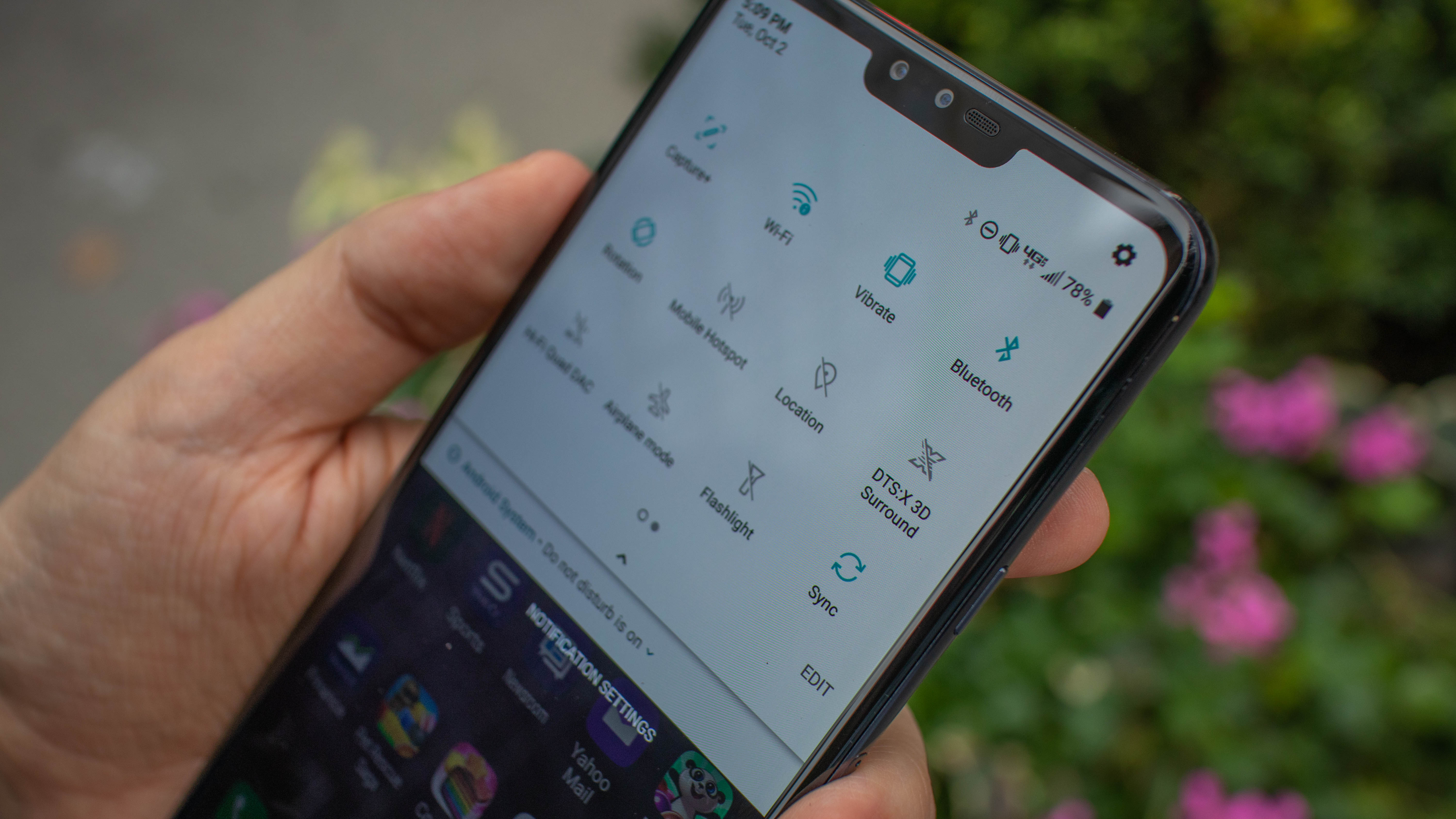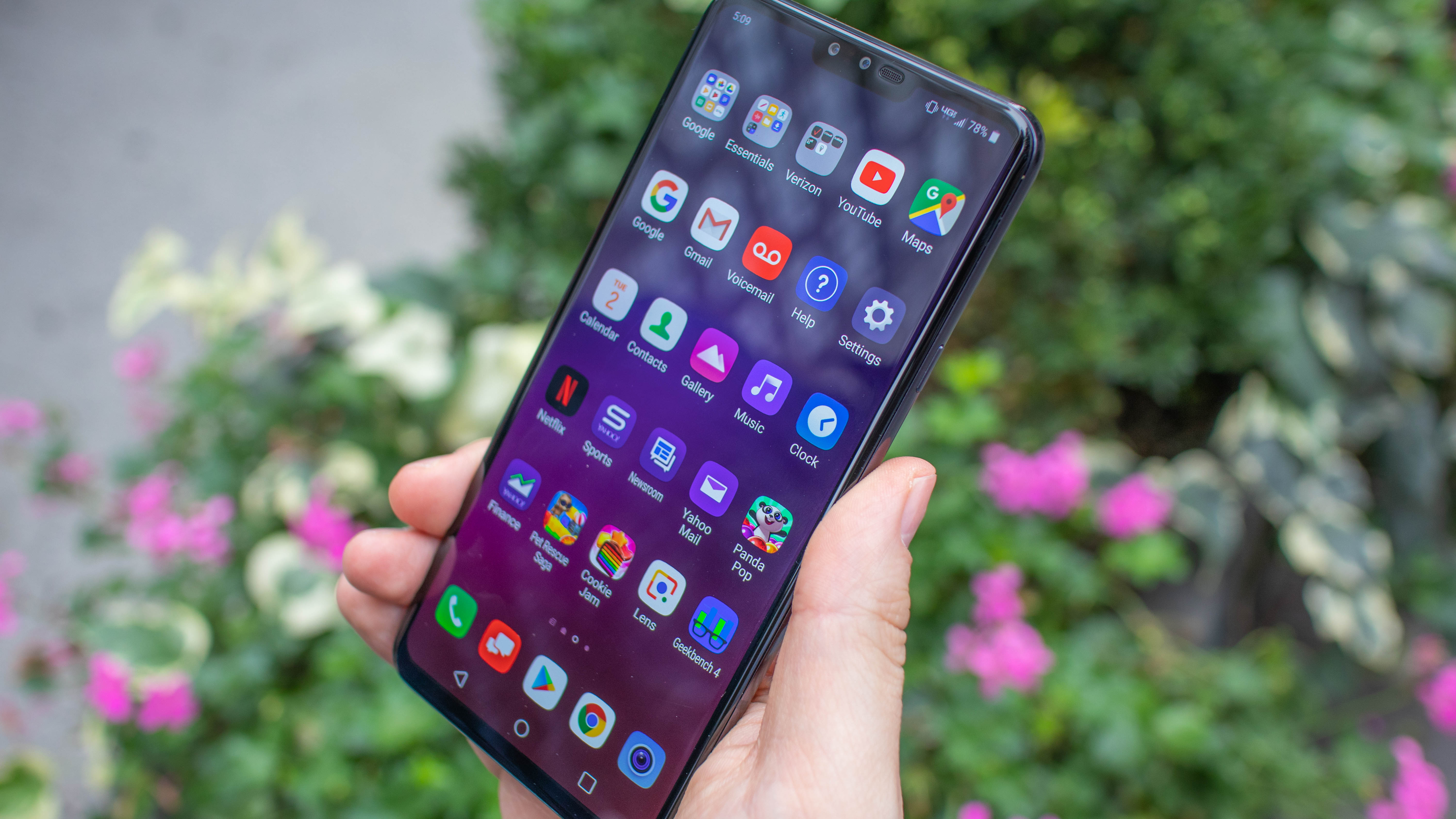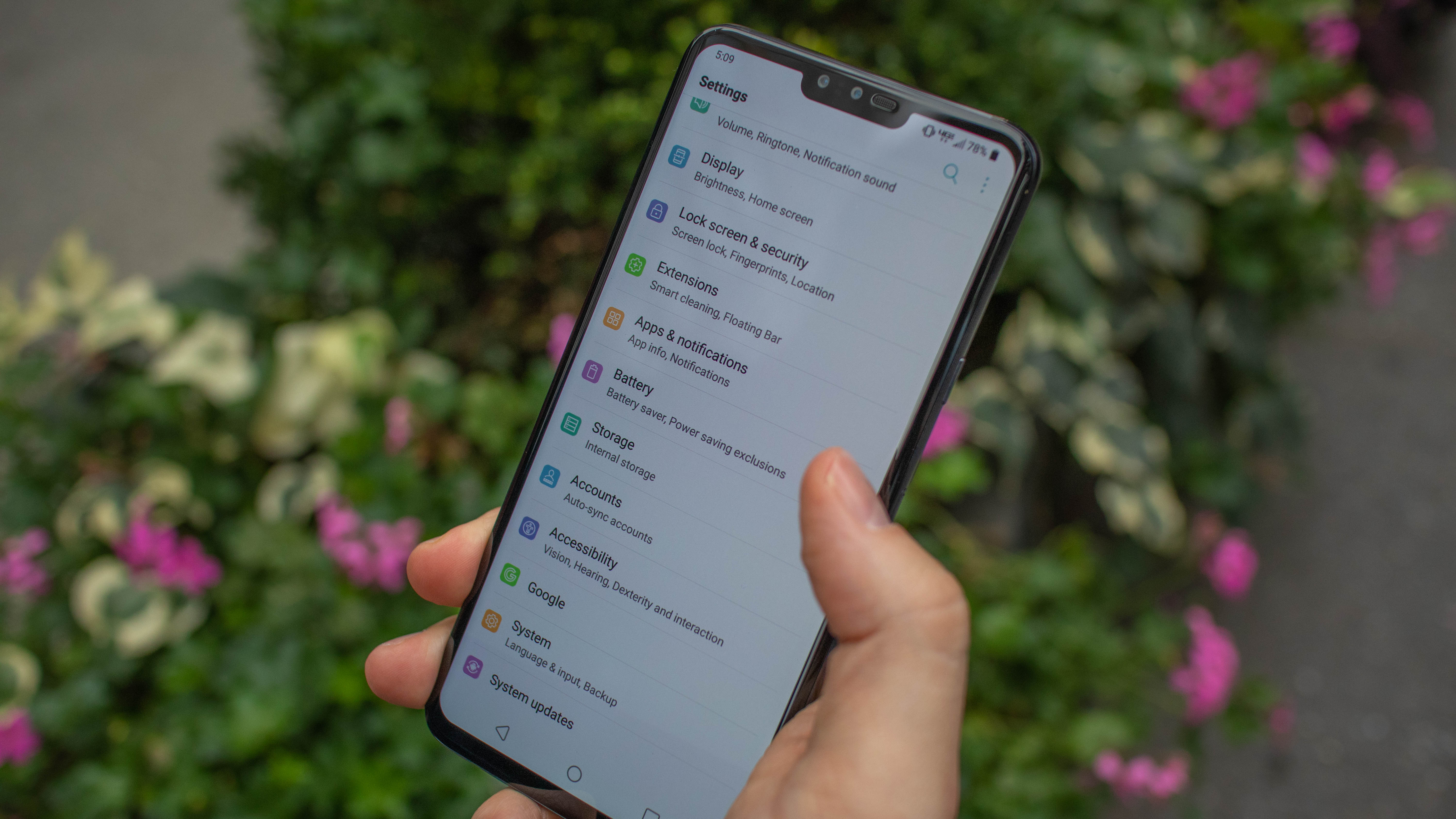Why you can trust TechRadar
Specs and performance
The LG V40 is fast enough to compete with the Samsung Galaxy Note 9 and the rest of the top Android phones, with the latest Qualcomm Snapdragon system-on-a-chip.

It has the Snapdragon 845 chipset and 6GB of RAM, which delivered snappy performance in our real-life tests. We weren’t left wanting, and it’s fast to boot up (just 15 seconds, including time to wait for the Verizon logo to vanish). It was the same story in our lab tests, with the V40 returning a Geekbench multi-core score of 8,787, finishing just behind the Note 9 and OnePlus 6. It’s a respectable performance.
We don’t have quite as much respect for the 64GB of internal storage. Yes, there’s a microSD card slot here for expanding on that, but Samsung offers double the storage space for a slightly higher price. We like almost everything about the LG V40 specs under the hood, yet value for money here isn’t as good as it could be.
Android Oreo and apps
The LG V40 launches at an awkward time in terms of the software it’s running. Google launched the Android 9.0 Pie update in late August, and this phone is running Android 8.1 Oreo. LG has promised faster updates among its Android phones, though it’s unable to offer a timeline for the jump to Android Pie.

What’s here is actually okay. The V40 interface already compensates for the notch cut out (a design feature that the Android Pie software make room for), using the space between the notch and side bezels as a ‘Second Screen,’ as LG calls it. It’s where notification icons reside, though it’s far from the novel second screen idea we got on the original LG V10 and the LG V20.
Pre-installed apps will very between carriers, but our Verizon review unit included annoying, although easy-to-delete games meant for little kids who like intoxicatingly bright colors: Panda Pop, Pet Rescue Saga, and Cookie Jam. LG relies heavily on Google apps (which is good), but has a few of its own: QuickMemo+, Messaging, LG Health, HD Audio Recorder, File Manager, Downloads, and Calculator. You won’t find too many duplicates between Google, LG and your carrier.
Battery life
The LG V40 has a disappointing small battery capacity of 3,300mAh, a trade-off of it being a thin and light phone. The Samsung Galaxy Note 9 pushes the capacity to 4,000mAh and has a much higher peak brightness, so LG clearly made big concessions in favor of design.

You’re still going to eke out all-day battery life from this phone, but it won’t always be pretty. By the end of a full day of heavy use, we were scrambling for a charger. Luckily, this phone does charge quickly enough with support for Qualcomm Quick Charge 3.0 and fast wireless charging.
What’s interesting is that the screen brightness peaks at 600 nits, while the LG G7 with its LCD screen has a special Super Bright Mode for outdoor use of up to 1,000 nits (temporarily for up to three minutes). Samsung’s AMOLED screens can reach a similar brightness. You’re not going to drain that much power here from screen-on time due to the limited brightness on the LG V40. It could be worse.
Current page: Specs, software and battery life
Prev Page Five cameras Next Page Verdict and competition
